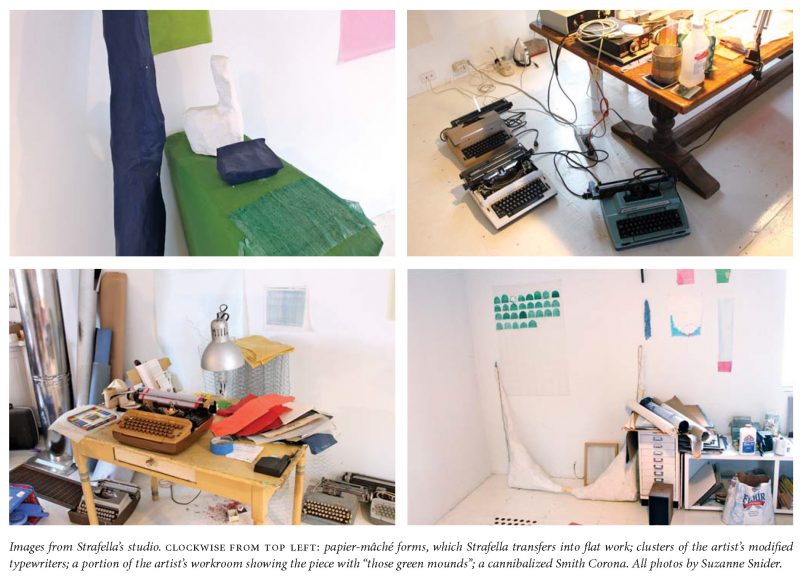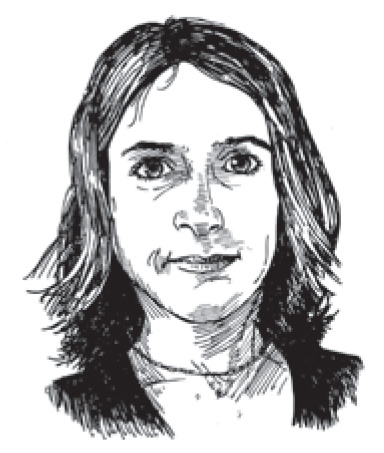Allyson Strafella can draw with a typewriter, a skill she’s honed over nineteen years of working with a number of Smith Coronas, special transfer papers, and a machinist willing to crack the typewriter open and retool it for her. In some cases, the drawings are made entirely with a colon, a hyphen, or a symbol from Strafella’s own lexicon, punched with extraordinary repetition through colored transfer paper. Some of these gorgeous works have been compared to Ellsworth Kelly’s prints, large geometric blocks of color.
We met one afternoon in her studio, in Hudson, New York, situated on the top level of a two-story barnlike building in the back of the home that she shares with her husband, Max, also an artist (his studio occupies the building’s first floor), and her two children, Miles and Pepper. Between the two buildings are a densely planted garden and a trapezoidal beehive, designed and built by Max.
—Suzanne Snider

I. THE COLON
ALLYSON STRAFELLA: The reason I draw with a typewriter is because of my insecurity about writing. I’d get all tensed up when I had to write papers in school, and I’d run to my sister, who was a journalism major. I just never felt confident about it. So I’d bicycle to school every day, to the library, and I would sit down and just write on the typewriter, stream of consciousness: all lowercase, no punctuation. I would write about what I encountered on the way. I might arrive at something in my work or something I wanted to learn more about. That’s how the typewriter came to me: to relieve myself of all the angst of formal writing and how to use language properly. I sort of broke it down.
One day I sat down and I thought, I’m thinking too long before I write. The first drawing I made was a grid, made of a dotted line: a dash. That was revolutionary for me. It was exactly what I’d been trying to find, because I was in school, in sculpture, and I was always trying to find my center, like, Where do I work from? What is my place that I work out from? So that grid was like, Oh that is my center. That’s the foundation of my work. I was in living in Watertown, in art school at the time, and I remember just sitting there at my desk and it was that “aha” moment. It sounds so corny and silly, but it was like, Oh my god. I have not stopped making drawings since I did that. That was in 1992 or ’93.
THE BELIEVER: Tell me about all these typewriters in your studio.
...
You have reached your article limit
Sign up for a digital subscription and continue reading all new issues, plus our entire archives, for just $1.50/month.
Already a subscriber? Sign in





